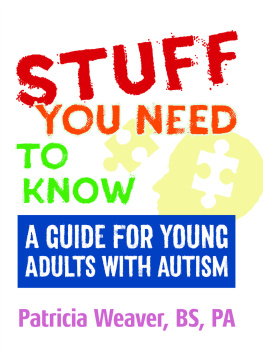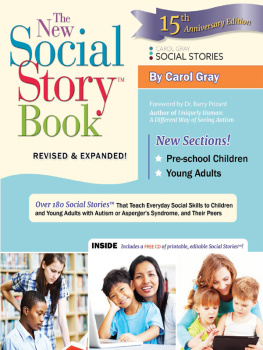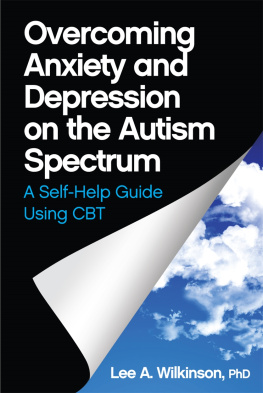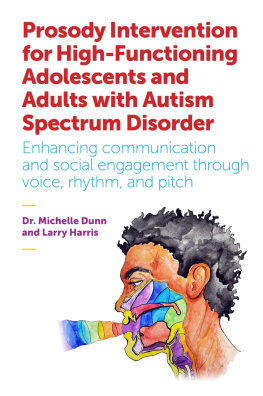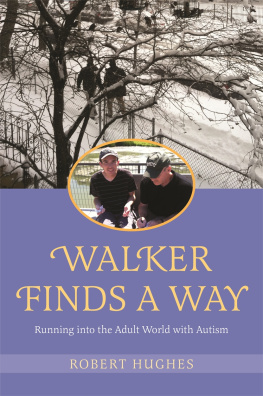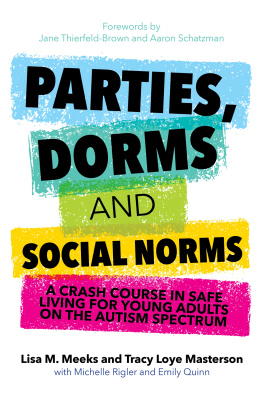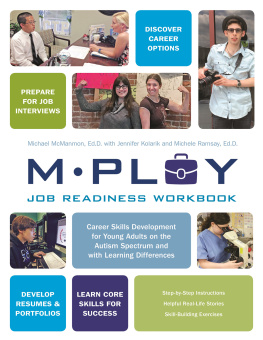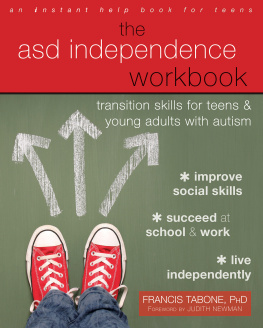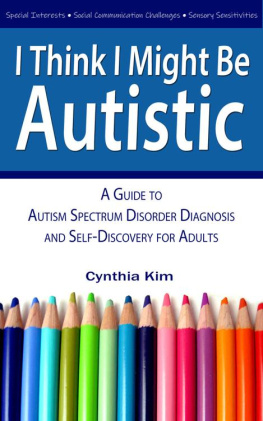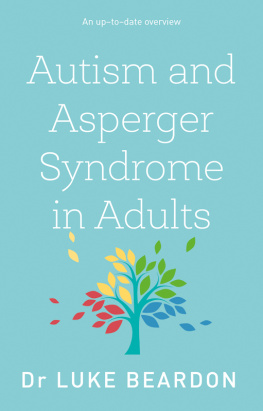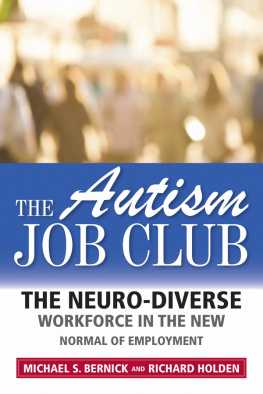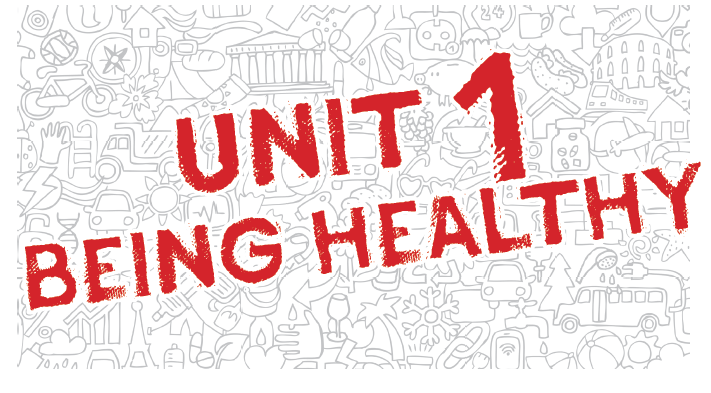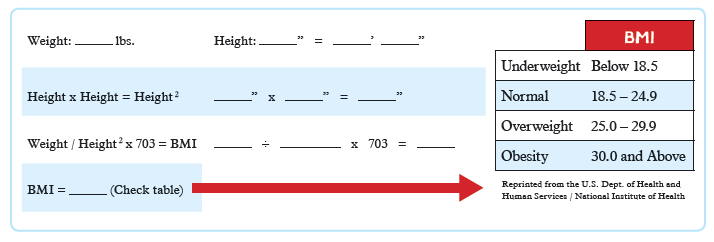STUFF YOU NEED TO KNOW
All marketing and publishing rights guaranteed to and reserved by:
721 W. Abram Street
Arlington, TX 76013
(800) 489-0727
(817) 277-0727
(817) 277-2270 (fax)
E-mail:
www.fhautism.com
2018 Patricia Weaver
All rights reserved.
Printed in Canada.
No part of this product may be reproduced in any manner whatsoever without written permission of Future Horizons, Inc., except in the case of brief quotations embodied in reviews or unless noted within the book.
eISBN 9781949177008
Notes and Suggestions
Being healthy is an important aspect of life that is relevant to everyone. Unfortunately, we do not routinely teach specifics about this part of our lives for several reasons. Often these are embarrassing subjects to discuss, or there may be other concerns such as medical issues. Regardless, young adults with disabilities need to better understand their own bodies and how to take care of them as they become more independent and start handling themselves as adults. Hopefully, this unit is a good starting point. We want these stories to open up an honest dialogue between the young adult with autism and their mentor, so issues can be openly discussed without embarrassment. Please understand that none of these stories are related to any specific person but are a representation of common occurrences I have learned through my extensive work with my own family and within the autism community.
In the section Healthy Numbers, we discuss our weight, BMI, and how these numbers relate to our overall health. When we discuss weight, the number isnt as relevant as how we feel, whether or not we can participate in activities we enjoy, and our overall health. In Active Lifestyle we discuss how to get and stay in shape by staying active. As we age and leave the daily routines of school and team sports behind, it is easy to become sedentary and gain weight. We open the discussion with activities young adults may like and how they can translate into enjoyable adult activities to keep us active and healthy.
This also oers a chance to teach some healthy activities that may be new to the young adult such as yoga, gardening, and dancing.
In Special Diet we address a common theme among many adults with autismtheir diet. Fortunately, special diets are much more common and accepted today, making them easier to follow. Our approach as mentors is to help our young adults (and others!) to better understand why people eat differently. This can open up discussions about food sensitivities, food allergies, and overall healthy eating habits. This leads into our last section, Smart Eating. As we age, our metabolism slows down. This may also be compounded by medications, a less active lifestyle, and other eects of advancing age. Now is the time to work on developing healthier eating habits and eating less processed foods. With this unit, if its possible, connect with a local nutritionist to have them discuss food choices and answer questions. Its always helpful to get information from a trained professional in your community. This unit includes a game guessing the calorie count of your favorite foods, as well as a guide to planning healthy menus with foods that you like. As a take-away with this unit we have included nutritional guidelines from a nutritionist and samples of fresh fruit or healthy gluten-free protein bars as examples of more healthy eating choices.
This is a fun unit as every topic applies to everyone in life and sometimes its reassuring to know others have similar habits and issues. We are all together as we travel through life and hopefully the following units will help us better understand our similarities and remind us that our dierences are smaller than we think.
HEALTHY NUMBERS
H i, my name is Chris and I have autism. I am 27 years old and a big guy. I like to go to the movies and amusement parks to ride on all the rides. Sometimes the seats are too small for me and walking around the park can make me tired. So I have decided to get healthy! The first thing to do is measure my height and weight. I like numbers, but I dont care what these numbers areI am going to use them as a starting point. Doctors also use these numbers to calculate my BMI (body mass index). That is a number that doctors use to determine how much stress I may be putting on my lungs and heart. So, as I work to get healthy I can track my progress by looking at my numbers . Are they going up or down? What are your numbers?
GLOSSARY
BODY MASS INDEX (BMI): This determines the amount of body fat based on a persons height and weight. It is used by doctors to help evaluate the stress on your heart and lungs.
HEART: Organ that pumps blood throughout your body.
LUNGS: Pair of organs that pump air through your body, spreading oxygen and removing carbon dioxide.
HEALTHY: Having a weight that is in the right range for my height and age. I am able to walk and move with running out of breath or tiring out.
ACTIVITY
Using a calculator, fill in your numbers and figure out your BMI for a start on a healthy lifestyle.
AN ACTIVE LIFESTYLE
H i, my name is Frances and I am friends with Chris. To help him get healthy, we have started going for walks together and working out at the gym. Part of getting healthy is moving around. Some ways to add movement to your day are taking brisk walks for 15 to 30 minutes, doing yard work, gardening, bicycling, or dancing to music. It is fun to try out the dierent machines at the gym and find your own favorite way to move! Sometimes you cant get out of the house or dont belong to a gym. There are some great activities you can do inside, like basic exercises and yoga. Any time you exercise, your body releases endorphins. Lets check out some basic exercises and yoga poses. Pick your favorites and try to do it at least 4 or 5 times a week. Its always fun to get healthy with a friend, so look around and find a friend to work out with you!
GLOSSARY
ENDORPHINS: The happy hormone; a group of hormones that are released by your brain during physical exercise that makes you feel relaxed and happy.
YOGA: A practice originating in ancient India which includes breathing control, meditation, and specific body poses. Yoga is great for overall health and relaxation.
WORKING OUT: When someone exercises to improve their strength, fitness, and overall health.
ACTIVITY
Using the pictures of six basic poses, try them out and remember to stretch.
Practice the six yoga poses. Longest held pose: _______ seconds
Favorite pose: ____________________________________
Notes on my favorite activities that help to keep me healthy:
Include favorite sports you participate in, daily walks or bike rides, gym activities, and outdoor work or play.

